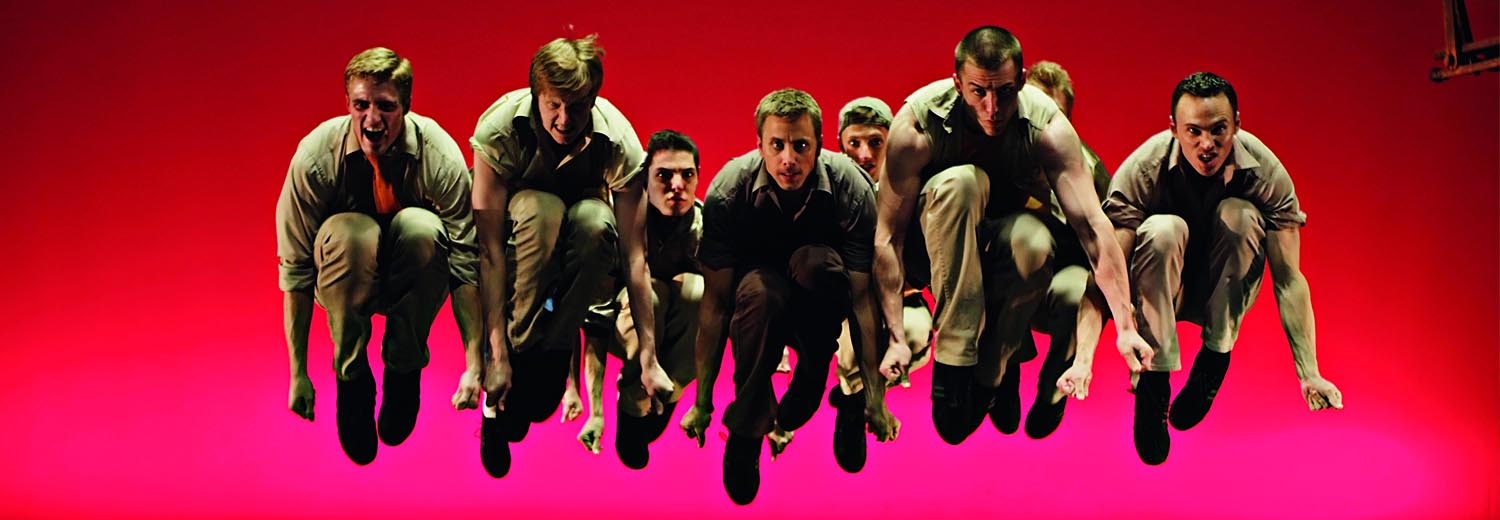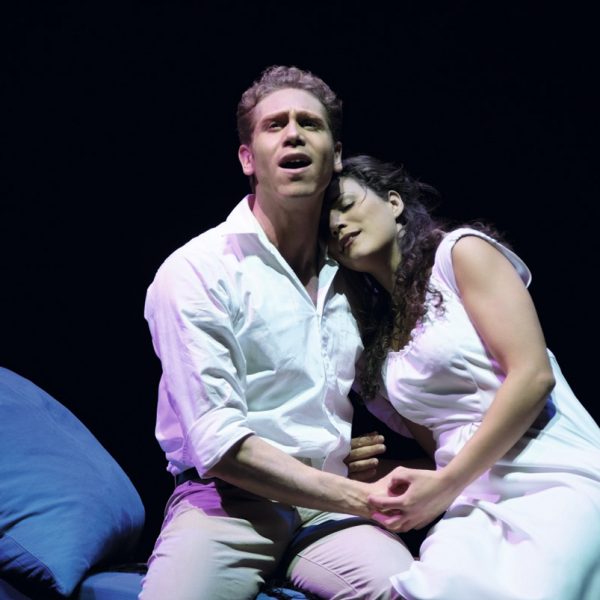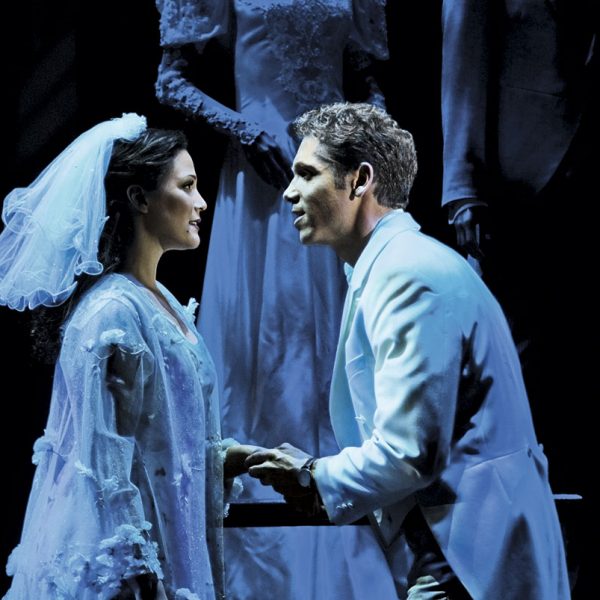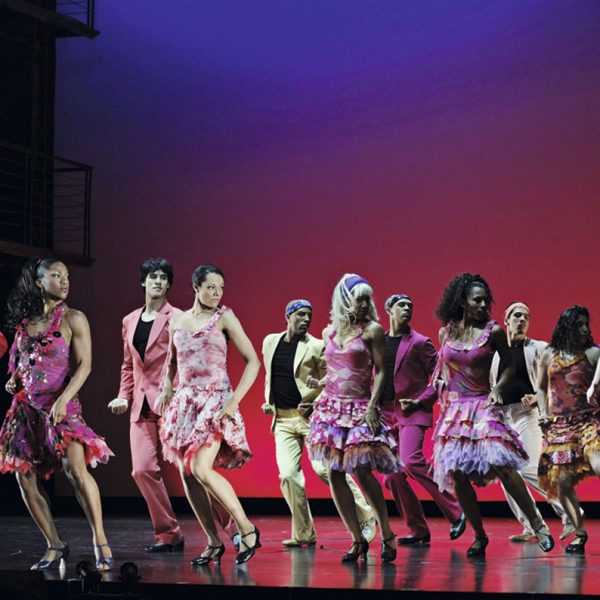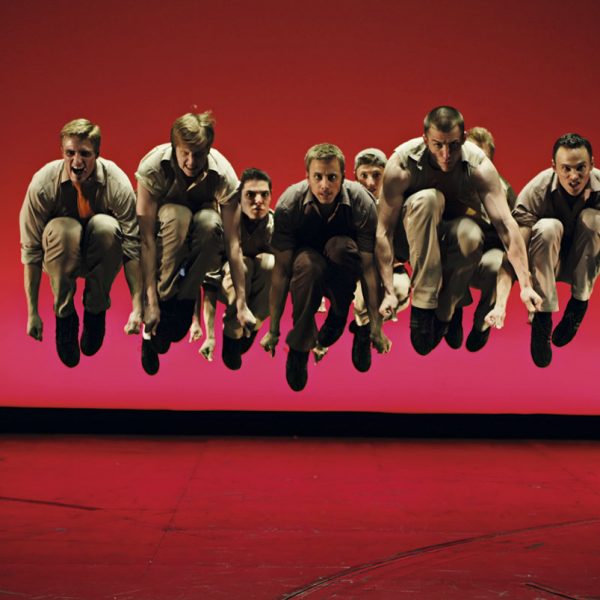WEST SIDE STORY
50TH ANNIVERSARY WORLD TOUR EN EL PRINCIPADO DE ASTURIAS
The María Cristina Masaveu Peterson Foundation sponsored the performance of an original Broadway classic in the Principality of Asturias: the musical West Side Story, which was first performed under the direction of its creator Jerome Robbins on 26 September at the Winter Garden Theatre in New York.
Two performances were staged at the La Laboral Theatre in Gijón on 26 and 27 August 2009, and the theatre was thus a privileged stop on the exclusive “50th anniversary world Tour”. The Tour took place on the occasion of the 50th anniversary of its première on Broadway, to pay tribute to its brilliant creator, director and choreographer Jerome Robbins, its composer Leonard Bernstein (music), its writer Arthur Laurents (libretto) and its lyricist Stephen Sondheim (lyrics).
A BB Promotion GmbH production in association with Sundance Productions, Inc., N.Y., presented and disseminated in Spain by Juanjo Seoane and José Angel García.
Jerome Robbins, a pioneering dancer, choreographer and promising director, first came up with the idea of creating a modern version of the tragic conflicts depicted in Shakespeare’s Romeo and Juliet. He had the idea when his friend, the actor Montgomery Clift, asked for his advice as to how to interpret the role of Romeo in a more contemporary manner. From that conversation, during which the family feud depicted in the original play was transformed into a teenage gang war in a run-down neighbourhood of New York, the concept took a firm hold upon Robbins. He started to dream about creating a team formed by the most talented artists in the world of music and theatre, and creating a novel and individual stage play that would be both avant-garde and commercial.
On 6 January 1949, Jerome Robbins called the acclaimed director and composer Leonard Bernstein to get his support on the idea. They had already had their first joint success in 1944 with the one-act ballet “Fancy Tree”, which was the basis of their Broadway hit “On The Town”. Four days later, Bernstein met at Robbins’ house with the playwright Arthur Laurents, who had just published his first successful play on social conflicts, “Home of the Brave”. Despite certain differences of opinion, the three men were determined to rise to the challenge: to write a play in which the musical, choreographic and linguistic elements would interact so perfectly that each component would spur on the plot in its own right, in a three-voice dialogue. In this way the most creative team in the history of American musicals was born.
Only a few scenes were drawn up before the “Romeo” project, as it was known, was postponed for several years, during which the collaborators pursued their separate careers. The brilliant trio did not meet again until the summer of 1955, although during their break Robbins had made repeated attempts to find a producer. A fourth man then joined the project, a young and virtually unknown lyricist called Stephen Sondheim. The creative process was both enticing and tortuous. The collaborators, who all had the same decision-making capacity, had to provide non-stop ideas, question every proposal and reject the progress made. Meanwhile, fresh ideas were contributed to the project by the stage designer Oliver Smith, who had been part of the process from the very beginning, and he proposed the use of materials such as brick, metal and cement.
They had been forming the ideal cast for six months when disaster struck: Cheryl Crawford, the show’s producer, quit the project just a few weeks before rehearsals started. In the face of this mortal blow, two determined producers, Harold Prince and Robert Griffith, stepped in and managed to come up with the production costs within one week.
While the first performances in Washington in August 1957 were highly acclaimed, the show was a flop in Philadelphia. Reviews of the Broadway première were equally divided, although everybody agreed that such a unique commercial show was rare. It was original thanks to its realistic context, its modern language aimed at a universal audience and its tragic end.

